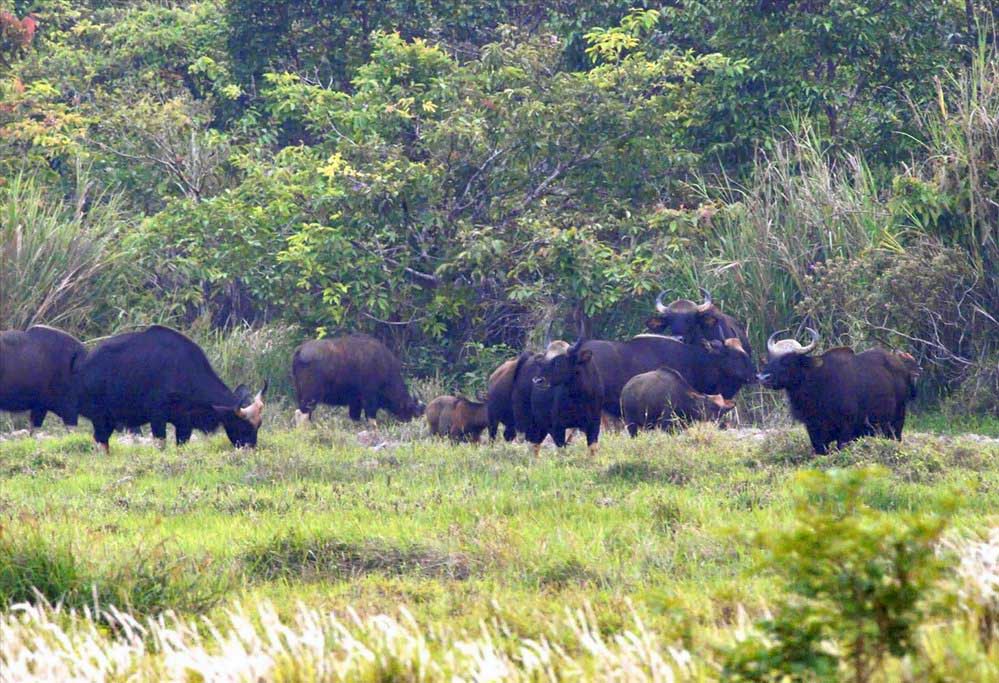At the ASEAN Ministerial Meeting on
Environment held in Langkawi, Malaysia, Vietnam had three more National
Parks recognized as 'ASEAN Heritage Parks'. The three recorded areas include
Pu Mat National Park (Nghe An), Dong Nai Nature and Culture Reserve and Xuan
Thuy National Park (Ninh Binh).
Vietnam travel service

Thus, Vietnam currently has 12 ASEAN Heritage Parks, among the countries
with the most heritages of this type in the region.
Pu Mat National Park
Pu Mat National Park is located in the old districts of Nghe An province,
including Anh Son, Con Cuong and Tuong Duong, with an area of nearly 95,000
hectares, and is the core area of the Western Nghe An Biosphere Reserve
recognized by UNESCO in 2007.
The name "Pu Mat" in Thai means "high mountain peak", with the highest peak
at 1,841m. The park has 2,494 species of plants and 1,746 species of
animals, many of which are listed in the Vietnam Red Book. This is also the
first place to record the saola, a rare animal endemic to the Truong Son
range.
The highlight of Pu Mat is Khe Kem waterfall, 150 m high, 20 km from Con
Cuong center. Visitors can visit the waterfall, take a boat on Giang River
or bathe in Suoi Moc, where the water is clear and cool all year round.
In addition, the culture of the Thai, H'Mong and Dan Lai ethnic groups here
contributes to creating a unique identity for this land.
Dong Nai Nature and Culture Reserve
The Reserve covers an area of approximately 100,000 hectares, including
68,000 hectares of natural forest and 32,000 hectares of Tri An Lake water
surface. This is the core area of the Dong Nai World Biosphere Reserve
recognized by UNESCO.
The reserve has 1,552 plant species and 1,817 animal species, of which
dozens are listed in the IUCN Red List and the Vietnam Red Book. It is home
to many rare species such as gaur, banteng, elephant, sun bear, dhole, and
is home to the last remaining herd of wild elephants in Vietnam.
In addition to its natural value, the reserve also has three national
historical relics including Suoi Linh tunnel, the Central Office of the
South and the Southeast Regional Party Committee. Currently, this is an
important eco-historical tourist destination of the Southeast region.
Xuan Thuy National Park
About 160 km from Hanoi , Xuan Thuy National Park (Ninh Binh province) has
an area of over 7,100 hectares. This is the first Ramsar site in Vietnam and
Southeast Asia, recognized since 1988.
Located at the mouth of the Red River, Xuan Thuy is an important wetland in
the migratory journey of tens of thousands of international waterbirds.
The park has unique ecosystems such as tidal flats, mangrove forests, and
sand dunes, which are home to many rare species such as spoonbills,
grey-legged pelicans, and spoonbills. In addition, the abundant seafood
resources here help sustain the livelihoods of coastal communities.
The area still preserves the traditional culture of the Red River Delta
residents with craft villages, festivals and ancient coastal villages.
In 2004, UNESCO recognized Xuan Thuy as the core zone of the Red River Delta
Biosphere Reserve. Today, it is a favorite destination for tourists
interested in wetland ecosystems and winter migratory birds.
Source:
https://vietnamspirittravel.com/travel-news/pu-mat-dong-nai-and-xuan-thuy-national-parks-get-international-recognition.asp